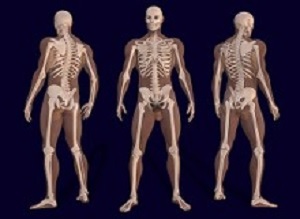 A researcher in the department of nutrition and exercise physiology at the University of Missouri-Columbia has published the first study to show that long-term, weight-bearing exercises promote bone formation and bone density in men.
A researcher in the department of nutrition and exercise physiology at the University of Missouri-Columbia has published the first study to show that long-term, weight-bearing exercises promote bone formation and bone density in men.
Osteoporosis affects more than 200m people worldwide and is a serious public health concern, according to the National Osteoporosis Foundation.
The study by Pamela Hinton found that long-term, weight-bearing exercises decrease sclerostin, a protein made in the bone, and increase IGF-1, a hormone associated with bone growth. These changes promote bone formation, increasing bone density.
"People may be physically active, and many times people know they need to exercise to prevent obesity, heart disease or diabetes," Hinton said. "However, you also really need to do specific exercises to protect your bone health."
In the study, men 25- to 60-years-old who had low-bone mass were split into two groups. One group performed resistance training exercises such as lunges and squats using free weights. The other group performed various types of jumps, such as single-leg and double-leg jumps. After 12 months of performing the exercises, Hinton then compared the levels of bone proteins and hormones in the blood.
"We saw a decrease in the level of sclerostin in both of these exercise interventions in men," Hinton said. "When sclerostin is expressed at high levels, it has a negative impact on bone formation. In both resistance and jump training, the level of sclerostin in the bone goes down, which triggers bone formation."
The other significant change Hinton observed was an increase in the hormone IGF-1. Unlike sclerostin, IGF-1 triggers bone growth. The decrease of harmful sclerostin levels and the increase in beneficial IGF-1 levels confirmed Hinton's prior research that found both resistance training and jump training have beneficial effects on bone growth.
To increase bone mass and prevent osteoporosis, Hinton recommends exercising specifically to target bone health. While exercises such as swimming and cycling are beneficial to overall health, these activities do not strengthen the skeleton. Hinton suggests also doing exercise targeted for bone health, such as resistance training and jump training.
Abstract
Purpose: We previously reported that 12 months of resistance training (RT, 2×/wk, N = 19) or jump training (JUMP, 3×/wk, N = 19) increased whole body and lumbar spine BMD and increased serum bone formation markers relative to resorption in physically active (≥4 h/wk) men (mean age: 44 ± 2 y; median: 44 y) with osteopenia of the hip or spine. The purpose of this secondary analysis was to examine the effects of the RT or JUMP intervention on potential endocrine mediators of the exercise effects on bone, specifically IGF-I, PTH and sclerostin.
Methods: Fasting blood samples were collected after a 24-h period of no exercise at baseline and after 12 months of RT or JUMP. IGF-I, PTH and sclerostin were measured in serum by ELISA. The effects of RT or JUMP on IGF-I, PTH and sclerostin were evaluated using 2 × 2 repeated measures ANOVA (time, group). This study was conducted in accordance with the Declaration of Helsinki and was approved by the University of Missouri IRB.
Results: Sclerostin concentrations in serum significantly decreased and IGF-I significantly increased after 12 months of RT or JUMP; while PTH remained unchanged.
Conclusion: The beneficial effects of long-term, progressive-intensity RT or JUMP on BMD in moderately active men with low bone mass are associated with decreased sclerostin and increased IGF-I.
Authors
Pamela S Hinton, Peggy Nigh, John Thyfault
Photo credit: Bernhard Ungerer, Flickr
[link url="https://www.sciencedaily.com/releases/2017/03/170322143135.htm"]University of Missouri-Columbia material[/link]
[link url="http://www.thebonejournal.com/article/S8756-3282(16)30301-5/abstract"]Bone abstract[/link]
